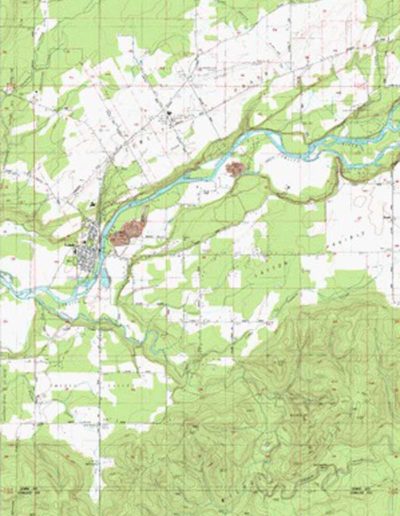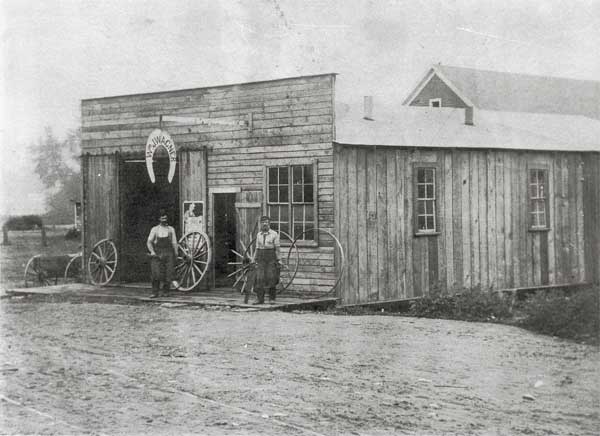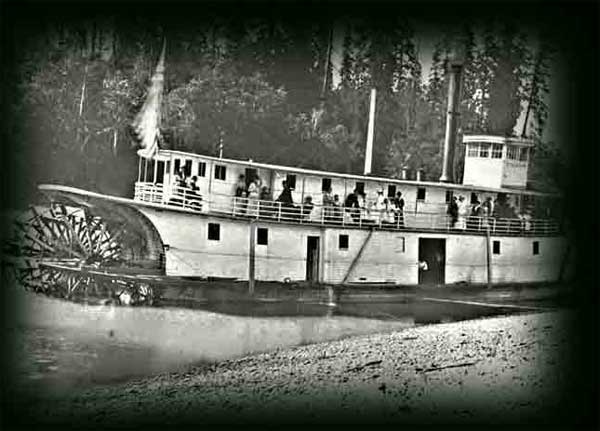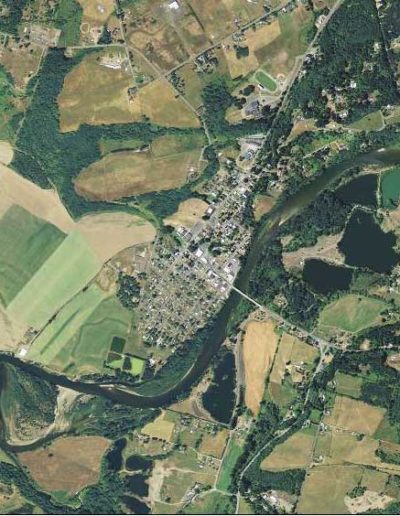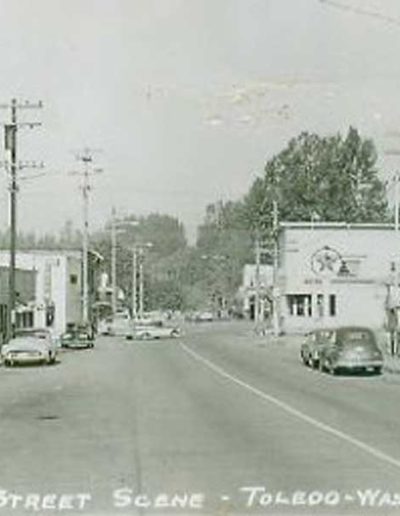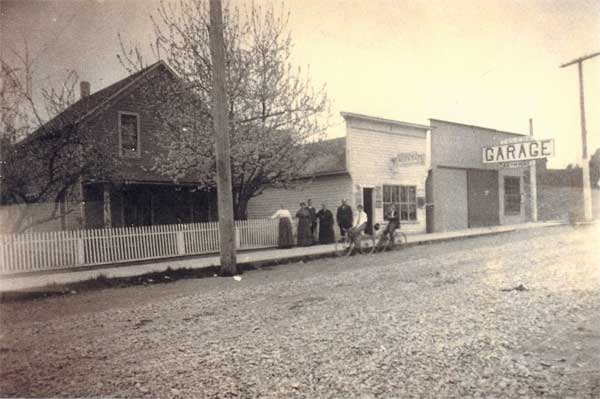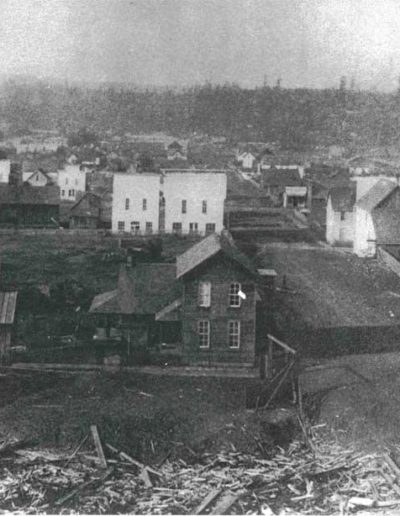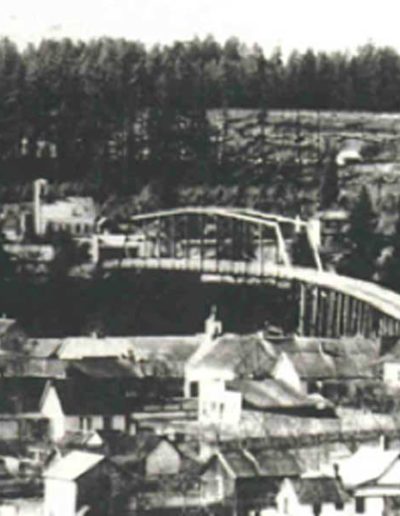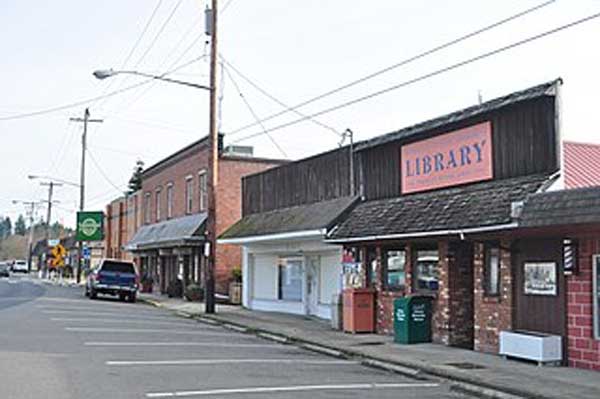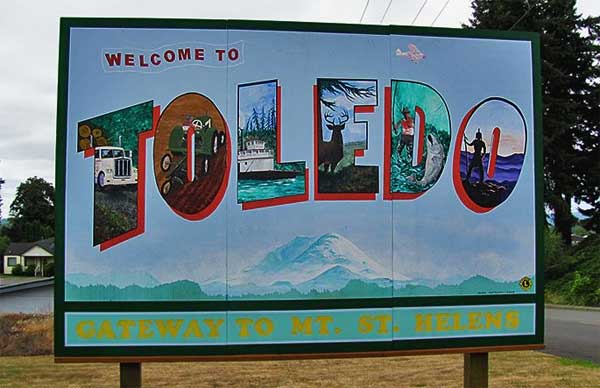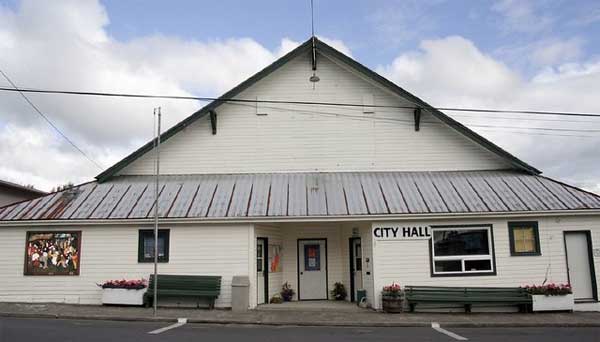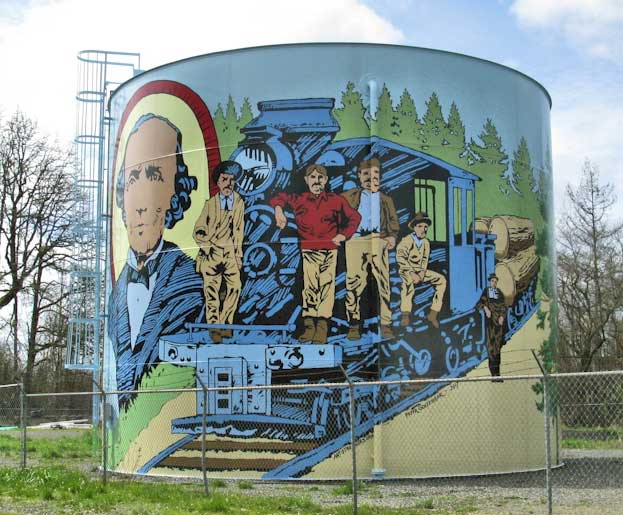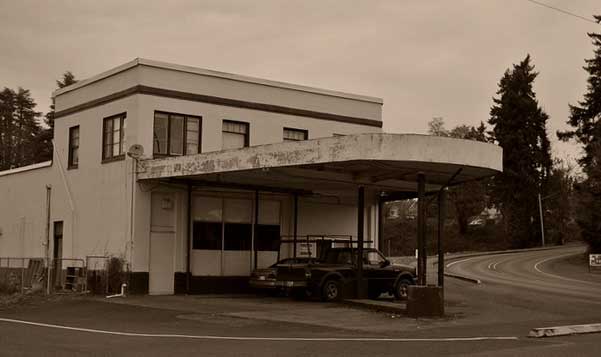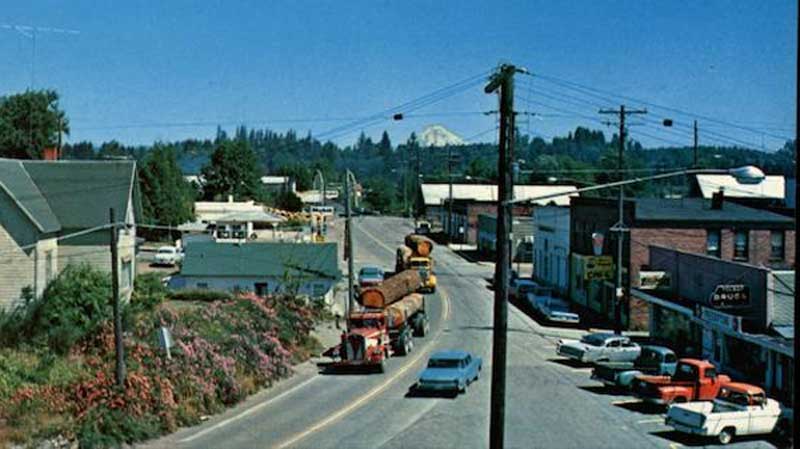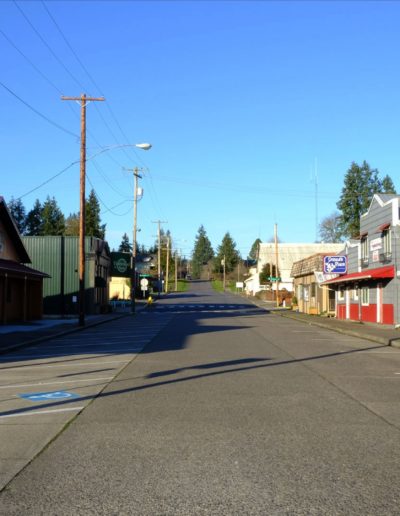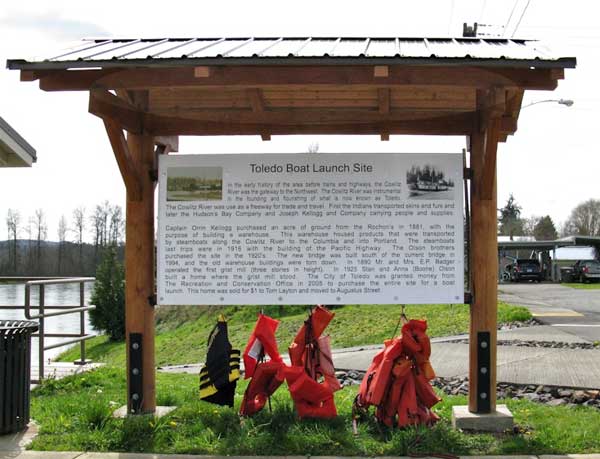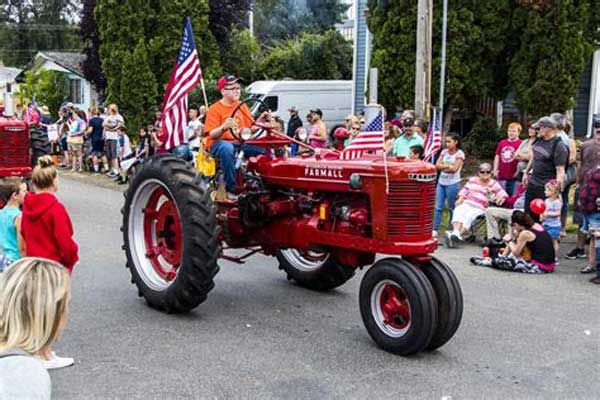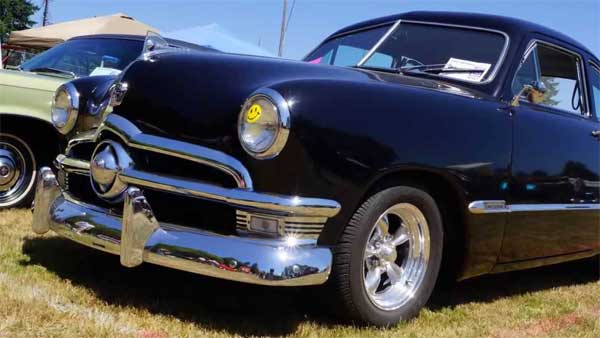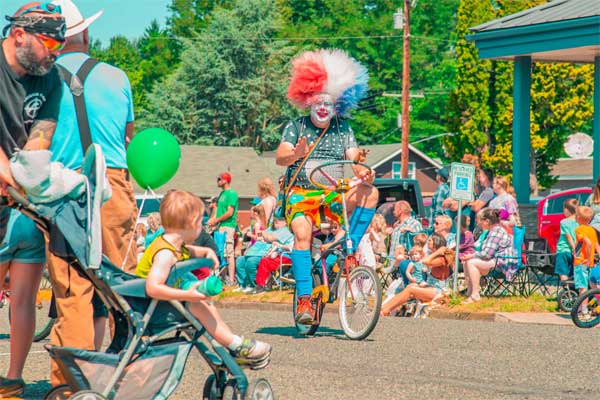History of Toledo Washington
INTRODUCTION
Written by: former Mayor Grover Laseke, November 1988.
The following is a brief history of the City of Toledo from its earliest beginnings with the Indians to the end of the riverboat era. During this visit to the past, we will see how the early settlers lived, played, worked and went on in what is now Toledo.
THE EARLIEST OCCUPANTS
Long before the white man ever laid foot in the area of what is now Toledo, the Coastal Indians lived here. The Cowlitz Indians were the major tribe in the area. They used the Cowlitz River as a manner of transportation in their handmade canoes and flat bottomed boats. The Cowlitz River also provided food for the Indians with salmon and other fish.
The area was heavily wooded and there were numerous trails that the Indians, and later the white man, used to travel cross country. There was plentiful wildlife in the form of deer, elk, bear, cougar, and water fowl. Wild blackberries and huckleberries were here in large supply also.
COWLITZ: CAPTURING THE MEDICINE SPIRIT
The Cowlitz people are a Coast Salish indigenous group who lived along the Cowlitz and Lewis Rivers that flowed into the Columbia and their tributaries. The Cowlitz were made up of the Sahaptin speaking Upper Cowlitz who dwelled in the mountains and the Salish speaking Lower Cowlitz who lived on the prairies and along rivers. It is not known exactly when they arrived in North America, but artifacts uncovered at former village sites show radiocarbon dating back 4000 years. It is likely that the Cowlitz people have occupied their ancestral lands for much longer.
The Cowlitz people were hunter gatherers, fishers, traders, and expert canoe builders. This enabled them to travel great distances to fish during salmon runs or visit relatives and to trade. The Cowlitz intermarried with other tribes as a means to acquire individual wealth, status, and alliances. Cowlitz women with expert basketry skills were highly sought after as marriage partners both within the tribe itself but also by other tribes. The territory they held sway over was about 4000 acres and the tribe was estimated to have 30,000 people before the arrival of the fur trading companies in the early 1800s. The tribe was powerful with respected chiefs. Chief Scanewa is remembered as the chief who permitted the marriage of his daughter Thas-e-muth to the young French Canadian fur trapper and explorer Simon Plamondon thus opening up the Cowlitz River for trapping and trading.
Chief Scanewa would later die in 1828 murdered in front of a new wife and baby up along the Fraser River because of his gambling winnings. Less than a year later an influenza pandemic brought by the ship OWYHEE decimated the Cowlitz tribe with the estimated loss of 98% of the people. Combined with the loss of their leader and most of the people it was a terrible blow that heralded changes that would challenge the cultural traditions, ceremonies, religion, and continuity that had sustained a way of life for thousands of years.
The year 1838 would bring two important changes to the Cowlitz prairie and to all the people who lived here. The Hudson Bay Company began the Cowlitz Farm, and the Catholic Church would send Fathers Blanchet and Demers to build the Cowlitz Mission, now known as the St. Francis Xavier Mission. The priests were welcomed by the Cowlitz who allowed them to remain and to construct a church and fence in land. Many Cowlitz found themselves working for wages on the farm; a system much different from the bartering and trading that they were used to. The priests began to instruct both the local people made up of French Canadians, their native wives and children and the local Indians and those who came from great distances to see and hear this new religion. While many embraced Catholicism many held to their old religious practices.
The arrival of a church signaled the influx of American and European settlers into the Northwest. A half mile down river from present day Toledo was the terminus for those stopping here but also for those travelling north. With them they brought a series of diseases such as measles, smallpox, typhus, intermittent fever that native people had no immunity against. They also brought the concept of land ownership, but not for those who already occupied it. The changes took place in less than 20 years and pushed native people to their limit. In an attempt to secure some land for their people many tribes signed treaties with Governor Stevens and the US Government, but the Cowlitz did not when given the choice to move to the Quinault land far from their own homes. The treaties were not advantageous to the Indians of Washington territory and brought about what are known as the Indian Wars from 1855-56. The Cowlitz were offered their own reservation land if they surrendered their arms, horses and did not attack the settlers. Believing they would receive the land promised they agreed to be confined to the area where the present-day Toledo Airport exists. Not only were the promises not kept, their hunting rifles and horses were not returned. The government did not consider how the Cowlitz were supposed to survive without horses and weapons to feed themselves and no reservation where the government supplied food and support.
The Cowlitz survived and endured keeping their traditions, skills knowledge, and unique culture alive. Because they had no reservation land and due to the fact that most of the early families were merged with the Cowlitz and their children married sons and daughters of the settlers they simply became neighbors to those living in and around Toledo. And continue to do so to this day remaining integral to our community.
Decades of struggle for Federal recognition finally came into fruition in 2000 and was upheld in 2002. The Cowlitz people now have reservation lands at La Center Washington.
THE PIONEER SPIRIT
The first settlers to the area saw these plentiful natural resources and moderate weather as the major advantages of the area for settling, but the area was not a paradise. It was a tough life for any man or woman to take on. Mother Nature was not always friendly and neither were the circumstances that faced the early settlers of this area.
In spite of the hardships and suffering they endured, the spirit and courage these pioneers showed lives on to this very day.
THE EARLY SETTLERS
It was the influences of the Hudson’s Bay Company that brought the first white settler to the Toledo area. Simon Plomondon is recorded as the first white settler in Southwest Washington around 1820. Plomondon was an employee of the HBC and started a farm on the Cowlitz Prairie known as “Cowlitz Farm”. He later went independent and was instrumental in local politics.
The Cowlitz Mission was started in the year 1839 by father Francis Norbert Blanchet and was located about 3 miles north of Toledo on the Cowlitz Prairie. Plomondon helped Blanchet in his endeavor, which was also encouraged by the HBC. The Cowlitz Mission ministered to the local Indians and white settlers.
Rumor has it that a town was planned for an area adjoining the Mission, but never materialized.
THE COWLITZ LANDING
The forerunner to the Town of Toledo was the Cowlitz Landing located about 1 mile downstream from the present city and 6 miles north of the Cowlitz-Lewis County line. The Cowlitz Landing was on the Clarke Donation Land Claim and it is unknown who actually settled in the area first. Cowlitz Landing was a determination point for people traveling by small boats upriver from Portland. From there they would travel by land to points to the north by trail and later by stage. Christopher C. Pagett, who later purchased the Toledo town site, ran a store and lived at Cowlitz Landing around 1853.
In 1850, Edward D. Warbass filed for a donation land claim and settled in an area adjoining the Cowlitz Landing in what was called Warbassport or Warbassville. There was a store, hotel, and other buildings started by Warbass.
Even though there were 2 towns at this same site, it was pretty much known as the Cowlitz Landing. In 1854 a post office was established and Warbass was appointed the postmaster. Cowlitz Landing was by then a thriving pioneer town. It ranked second only to Monticello (presently Longview) as the most important port on the Cowlitz River for the movement of goods to and from Portland.
THE TOLEDO TOWN SITE
The site of what is now the City of Toledo was originally held by Joshua Tibeau who squatted on the land in the early 1850s and built a house near the river on what is presently Cowlitz Street. Christopher Pagett bought Tibeau’s squatter rights in 1854 and filed for a donation land claim.
Pagett and his wife, Urania, were awarded a donation land claim by the U.S. Government on March 6, 1866. Pagett sold the land in April of the same year to Javan Hall for $250, but re-acquired it on March 28, 1871. In 1873 he sold the property for $800 to Augustus Rochon.
Little is known about the actual founding date of the town that was to become Toledo. It is reported that there was a town at the site as early as the late 1860s, but there is no record of the population. There were no records kept until the town was incorporated in 1892.
THE RIVERBOATS ON THE COWLITZ
About the time Augustus Rochon came into possession of the property, there was a steady influx of white settlers to the area. Riverboats powered by steam engines replaced the small canoes and boats used by the Indians to haul goods for the settlers. The first riverboat on the Cowlitz was the steamer Bell in 1861. The northernmost terminal for the steamboats was Rochon’s property, although the Cowlitz Landing was still very much in use.
The Joseph Kellogg & Company operated many of the riverboats on the Cowlitz after some unsuccessful tries by other people. A large majority of the settlers to the Toledo area arrived on these riverboats from Portland. The riverboats also provided transportation for supplies to the area, but also for items going to market from Toledo and other surrounding areas to Portland.
In the early days the riverboats would travel from Portland once a week, but as the area was settled, these trips increased to 3 times a week. It would take a riverboat 24 hours to make the trip from Portland to Toledo stopping at other little landings to pick-up and deliver items along the way.
In 1878 the Kellogg Co. commissioned to have a riverboat built in Portland that was named Toledo (after Toledo, Ohio). The Toledo had 2 steam engines, was 109 feet long, and weighed in at 207 tons net. The Toledo first visited the Rochon property in 1879 and spent 13 years on the Cowlitz River before being retired.
The last boat visit to Toledo was on April 14, 1918. The arrival of more efficient and less expensive modes of travel caused the decline in riverboat use.
THE NAMING OF TOLEDO
In 1879 Augustus Rochon plotted 3 blocks of the original town site. One lot was sold to Hillaire Nallett and other to J.W. Caples & J.C. Wood, who built a general store. At this time there were few residents who lived in town, but many had settled in the prairies surrounding it. Rochon and his family lived in a house near the river on what is now Cowlitz Street where Olson Bros. Garage now stands.
In 1881 Captain Oren Kellogg, of the Kellogg Company, entered into negotiations with Rochon to purchase 1 acre of river front land for the purpose of building a warehouse (which was built that same year and torn down in 1988). Either just before or after the deal was completed, Captain Kellogg told Mrs. Celeste Rochon that she could have the honor of naming the new town. Mrs. Rochon looked out the window and saw the riverboat Toledo and picked that name for the town.
During the 1880s the town grew rapidly. Many new settlers arrived in the area and the population of Toledo in 1886 was 150. Because of this growth spurt, there was a need for services and supplies, which resulted in an expansion in businesses. The businesses grew up on both sides of the river and by 1890 there were hotels, a blacksmith shop, several general stores, a doctor, drug store, some saloons, tin shop, millinery shop; several saw mills, a sash and door factory, a distillery, cigar factory, soap factory, and furniture factory. Many of these businesses used river power to operate the machinery. A post office was established on November 30, 1880 and a cemetery plotted out in 1883.
THE INCORPORATION OF TOLEDO
People came from all over to settle in the Toledo area. Some came from Chicago, Texas, Germany, Maine, Ohio, Canada, North Carolina, Wisconsin, England, and New York. They brought with them many different social customs and experiences. Most of them rode the river boats up from Portland.
The Town of Toledo had a sister across the river called Eadonia or East Toledo. At Eadonioa there was a settlement that contained a store, blacksmith shop, sawmill, church, post office (established August 2, 1888 and discontinued in 1892) and school. Eadonia was founded in the 1860s by Jvan Hall and was named after William Eadon who moved there later. Eadonia was never incorporated.
In the early days travel across the river between the 2 towns was by canoe. On July 4, 1883, W.E. Colby started a ferry service across the Cowlitz River. This service continued until the first wagon bridge across the river was built with trees from the south end of Toledo and cut in a local sawmill. The bridge was 841 feet long, 20 feet wide, and cost $20,000 to build. After it was dedicated on July 20, 1892, most of the businesses moved across the river from Eadonia to Toledo, which bolstered the size of the town.
Within the growing number of people in the town it became apparent that local control of their affairs was desirable. On September 6, 1892 a petition was presented to the Lewis County Commission in Chehalis that had the names of 60 Toledo residents on it requesting a vote on incorporation. On October 1, 1892 the residents of Toledo voted to incorporate their town with 39 votes for and 12 against. They elected Robert Stopper, a local shoemaker, as the first mayor. Councilmen elected at the same time included: W.D. Kimbrough, G.W. Denny, D.S. Farrell, Charles Divine, Ed Burbee and G.M. Boyles.
Some of the first business conducted by the council included hiring a Marshall and city clerk, passing an ordinance relating to the running of wine at large, rent space to hold meetings for $3.00 per month (half to be paid by the city clerk for his private business), and calling for bids to build a jail (cost $143.00). A liquor license cost $300.00 and 1 was immediately purchased by Peter St. Germain.
The town of Toledo was a thriving place. The 1890s saw the building of a grist mill, establishment of a meat market and a potato evaporator, which supplied Alaska during the gold rush. The river boat dock and warehouse continued operation. The outlook was good for this town on the river.
SOCIAL LIFE IN EARLY TOLEDO
There were no theaters or other types of organized entertainment in early Toledo, but the people still managed to have a good time. Some of the local celebrations, which were big during these times, were Memorial Day (also known as Decoration Day) and the 4th of July. There would be a parade and other festivities before people would go down to the Old Maple Grove (now the community park) for a picnic and games. Many times there would be a dance the night before with local people playing various instruments for music. People would travel from all around to take part in the celebration.
At Christmas time there would always be a program attended by all at either the school, one of the churches, or a local hall. People would have parties in their homes and box socials were popular. There was also a Literary Society and spelling contests. Also popular were any programs put on at the local schools.
TRANSPORTATION
Besides travel by riverboat there were early trails and roads to get to the outside world from Toledo. Many of the roads were probably early Indian Trails widened out for horses and wagons. As time went on, corduroy roads were built to get out of the mud and then later, plank roads.
Goods that came up the river by riverboat were shipped by wagon to Salkum, Mossyrock and other outlying points.
THE LOCAL INDIANS
There were many Indians who resided in the Toledo area in the early years. All of them were friendly to the settlers and residents. There was never any reported Indian trouble in the immediate area, but there were blockhouses built in several locations, just in case. Most of the settlers learned Chinook Indian jargon, which was used to communicate with them.
As time went on the Indians learned many of the white man’s ways. They would seek counsel from some of the more prominent citizens of the area including the Justice of the Peace who would sometimes settle disputes for them. Indian George (who was an excellent canoe maker), Indian Kitty, Aunt Mary and Chief Atwin Stockum (buried at the Cowlitz Mission) were some of the more visible and friendly Indians.
SCHOOLS AND OTHER LOCAL INSTITUTIONS
Schools were established in Toledo and surrounding areas almost as soon as people settled. This was the custom of the most settlers to the west as an education was considered important. One of the earliest schools was in a shanty barely big enough to hold the 8-10 students. In the early 1880s a one-room school was built on Cowlitz Street between Fourth and Fifth Streets. Later in the same decade, a two-room school was built on property behind the present day middle school on North Fifth Street near Coal Street. In 1901 a four-room school for both elementary and high school students was built. There were no rural children attending school.
A newspaper, The Cowlitz River Pilot, was established in Toledo on July 21, 1886, but moved to Winlock in 1888. The Toledo Tidings was published in Toledo for many years and was started on April 25, 1890. In 1901 The Recorder started publication for a 6 year run.
Churches were also important to the people who settled in and near Toledo. A Methodist Church had been established in Eadonia. The Baptist Church was established on April 4, 1887 and the Presbyterian and Congregationalist Churches were built in 1890 in Toledo. The Catholic Church was at the Cowlitz Mission.
Early community groups included the G.A.R. (Graced Army of the Republic and the forerunner of the present American Legion), which built a hall in Toledo in 1886. The Women’s Relief Corps was an auxiliary of the G.A.R. and they were formed in 1886. The I.O.O.F. or the Oddfellows was established on February 13, 1890 and the local Masonic Lodge was officially installed on July 15, 1902, but was in the formation stages for a year prior to that. On December 25, 2010 the historic Masonic Lodge (formally known as Cowlitz River Antiques) was destroyed in a fire. The Montrose Rebekah Lodge #46 was established on July 8, 1892. They owned one of the oldest buildings (built in 1900 by the I.O.O.F.) in town (located next to the Presbyterian Church on the corner of Augustus and South Third Street), but it was torn down in 1987.
FARMING AND LOGGING IN THE TOLEDO AREA
Early settlers of the area grew wheat, hay, potatoes and other traditional crops. Hops were popular for several years from the early 1890s to the early 1900s. Hops were shipped to England when the market was good, but later diseases in the crops and Prohibition made their growing un-profitable.
At the turn of the century dairying, beef cattle and poultry became popular with the farmers of the area. It was also around this time that steam threshing machines entered the area and men would travel the countryside to thresh for the farmers.
The harvesting of timber was an important industry of the area. Early logging was done with oxen teams and a lot of sweat. Loggers turned to steam donkeys in later years much the way the farmers did. It was still a hard job compared to our modern times and is still one that employs many people in the Toledo area.
Sawmills both in Toledo and surrounding areas kept busy producing lumber for a growing area, shingle mills were also important to the local economy.
THE TURN OF THE CENTURY
Riverboats were important to the economy of Toledo as the terminal for transportation of people and goods. This continued into the first two decades for the new century.
Some of the other important developments of the early 1900s were the establishment of the city fire department by the town council in 1904. The first Fire Chief was A.R. Badger. At about the same time, the city started purchasing water from the Henriots, which ended private wells in town. Water was piped in from the springs in the upper Bill Creek area and some fire hydrants were put in. One of the first pieces of fire equipment purchased was a hose cart, which the fire department still has and it is seen annually in the Cheese Day Parade.
Another improvement was the installation of kerosene and later gas lamps as street lights. The street lights were lit for $3.00 a month by the town Marshall. Board sidewalks were also built at this time.
The St. Helens Incubator Company was established in Toledo, but later moved to Fords Prairie. The first telephones were installed in 1906, but the city was still without electricity until 1911. A new newspaper, The Toledo Messenger, was published November 26, 1909 and continued publication until 1941 under several different owners. The Toledo State Bank came to town in 1909 and a bank building (which is still in use today) was built in 1920. The population in Toledo in 1910 was 650.
Two problems that came up frequently in Toledo was the flooding of the Cowlitz River and Bill Creek. Much damage was done in floods over the years until Bill Creek was diverted. The Cowlitz River was a problem for many of the early years – either it was too high, causing flooding, or it was too low, making it difficult for the riverboats to make it to the dock. This problem was not remedied until the building of the dams upstream at Mayfield and Mossyrock.
The other problem was with cattle roaming through town. In 1916 this caused quite uproar in the town’s elections over whether cows should be kept behind fences or let to run at large. The 1916 election was in favor for the people who wanted the cows loose, but this was overturned the following election year.
In 1912 a fire swept through the business district of Toledo damaging several buildings. According to reports, quick thinking by some of the firemen kept the whole town from burning to the ground.
It was shortly after World War I that several of the present commercial buildings in Toledo were built. Most of the buildings were built from concrete and brick. They are still in use to this day.
As mentioned earlier, the riverboats stopped coming to Toledo in 1918. This ended Toledo’s prominence as a transportation terminal, but not as a city. In 1919 a new overhead metal bridge was built across the Cowlitz River (it was replaced in 1994). With this new bridge came the Pacific Hwy, this was the main north-south highway between Portland and Seattle.
Also in 1919 was the celebration of the first Cheese Days put on by members of the Cowlitz Valley Cheese Association. This group of dairyman joined together to market their cheese and in June met to pass out the first checks from cheese sales. They had a little get together and all had such a good time that they decided to make it an annual event and to invite local citizens. Cheese sandwiches were served at the first Cheese Days and they are still served (free of charge) at the Presbyterian Church during the annual Cheese Days celebrations.
SUMMARY
From the days of the Indians dominance of the Toledo area to the end of the riverboat days, it was a man and his desire for a better life that brought the Indians here centuries ago and the white man. It is all history now, but it’s important. If we forget about the paths walked by the people before us, then we forget why it is that we are really here.
CHEESE DAYS
In June of 1919 some one hundred or so shippers to the newly organized and constructed Cowlitz Valley Cheese Association, gathered at their building to receive their first checks. In anticipation of the occasion, President Del Giblin, some of the board members and employees and their wives had prepared coffee and cheese sandwiches from some of the first products of the company. Such a pleasant time was had that it was decided by the board of directors, to make the affair an annual one, and to include the public.
Therefore, June of 1920 was chosen as the date of the first public Cheese Day, and the site for the affair was to be Day’s Grove a picnic area located in the back of the present day middle school. A dance platform was erected, carnival secured, baseball game planned, speakers contacted and finally tables spread, with whole cheeses distributed around them. Cheese was to be cut as needed. The day was one of general good feeling, visiting, and planning for better Cheese Days to come.
The Association sold out in 1927, but Art Karlen operated the business until 1945. Cheese Days were still held as an annual celebration. Cheese Days were discontinued during World War II but were revived in 1948 by the Toledo Lions Club. For a short time the Toledo Jaycees took over Cheese Days, but in recent years it has again reverted to the Lions Club and the Cheese Days Committee.
Cheese Days has now become a three-day event with so much to do. It is held the second weekend in July. Events during the three day celebration include; picnics, barbeques, tennis tournaments, a parade Saturday morning, arts and crafts, free cheese sandwiches, yard sales, Reno Night, community breakfast, and so much more.
